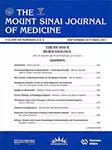Avoid rearfoot fusion with the right surgeon and the right techniques.
No parent wants to see their child suffering in pain and withdrawing from life. And no young person wants restrictions on their future. Many foot surgeons take an overly aggressive approach to tarsal coalition, performing fusion procedures that may eliminate pain but lead to new problems later on. Fusion can cause permanent stiffness of the foot, which can interfere with normal gait and movement, limiting activities and causing knee, hip, and spine issues.
Dr. Blitz has dedicated his career to avoiding fusion, making important contributions to advance the surgical treatment of tarsal coalition. His progressive, published approach removes the abnormal connections and corrects the structure of the foot in a single operation. And instead of requiring fusion, his methods restore flexibility, range of motion, and quality of life.


















